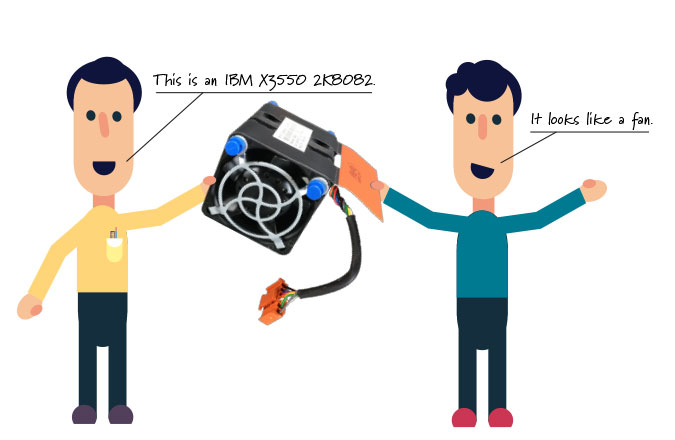With the exception of a few blocks in a few cities 5G does not exist in the United States. Despite all the hype it’s getting, right now 5G is more theory than reality. 5G will revolutionize delivery of high speed data, but it will be a while before the bulk of US consumers regularly connect with 5G. The best strategy for now is to enjoy 4GLTE coverage, watch, wait, and plan.
In a lot of ways we know more about 5G’s potential than its reality. According to Mike Moore of TechRadar, “estimates expect the average speed of 5G networks to reach 10Gb/s, and some even think transfer rates could reach a whopping 800Gb/s.” That is an 8,000% difference between the low and high estimates. 5G has crazy potential, but we will be on the very low end of the speed predictions in the early stages. Even at the low end 5G will have speeds only previously available with a wired connection. Speed like 10Gb/s will be common eventually, but not today, and probably not a year from now.
The 5G Reality
Where 5G is in “testing,” the roll out is block by block. There are areas of Chicago, Dallas, and Minneapolis where, if you win the geography lottery, there is a real 5G signal. But don’t wander around because you might lose the connection. In an April 2019 PCMAG.com article aptly titled “5G is [Barely] Real,” Sascha Segan notes “Verizon’s 5G in Chicago, right now, only covers parts of downtown and seems to get about 300 feet of distance from each cell site. AT&T’s 5G in Dallas gave us 1.3Gbps speeds and about 600 feet of range—but only at two locations in the city.” In an April press release Verizon promised, “20 U.S. cities will get 5G Ultra-Wideband service in 2019.” But a footnote clarified, “5G Ultra-Wideband available only in parts of select markets.” 5G cells have narrow reach, so networks will need lots of them, and full market saturation will take time. Today, world-wide the greatest 5G density is six major cities in South Korea.
Where are the Phones?
Even if you are next to a 5G cell, your iPhone 10 won’t know it. The Motorola Moto Z3 with its Moto Mod is the first 5G phone available in the US. You can get one from Verizon, and if you happen to live in parts of Chicago or Minneapolis you might be able to find a 5G signal. The Samsung Galaxy S10-5G is just arriving at some Verizon stores. But phones are not the obstacle to 5G. Several 5G capable devices will roll out in the new generation of phones, before the network infrastructure is fully deployed even in major cities.
5G is Good for Carriers
It will be a while before consumers can wander anywhere and enjoy a 5G connection. The real near term advantage of 5G isn’t to the user, but to the providers. 4G goes back to 2010, and even 4GLTE, and 4GLTEA were just a refresh and extension of 3G with more and better connections. The 3G/4G network hardware is getting old, and the 5G build out will be a revolution. On AndroidCentral Hildenbrand, Maring, and England write, “5G benefits the carrier as much or more than the consumer. The initial costs of new equipment will be offset by the savings over maintaining the current aging infrastructure. The ability to actually compete with in-home broadband service without resorting to fiber will gain more customers, all 5G devices in the U.S. will be carrier-specific, and some of the costs will be passed on to the customer.” In short, because there will be newer, faster technology, carriers can raise rates in a market where rates have stabilized and are even falling.
New Rules, New Tech
Like 3G and 4G, 5G isn’t one thing, but a set of protocols and rules. One of 5G’s new rules now allow 4GLTE-LAA (License Assisted Access). Previously carriers had to license their transmission bands, LAA uses the unlicensed 5GHz band used by Wi-Fi to increase bandwidth, however, only when there isn’t Wi-Fi traffic present. LAA uses a concept called Listen-Before-Talk (LBT) which dynamically selects channels that are not being used. The technology uses these unlicensed bands by “sharing them fairly.” 4GLTE-LAA is the thing AT&T is badging 5Ge.
The real 5G rollout however will supplement the current 4GLTE channels in the 450 to 6,000MHz bands with a whole new set of frequencies from 24GHz to 86GHz the so called Millimeter Wave Bands. Anyone with dual band Wi-Fi experience knows that transmission is denser and faster on the 5GHz channel, but reaches farther on the 2.4GHz channel. The same is true, and more so for the Millimeter wave bands; they are screaming fast, but don’t carry very far. 5G networks will be made of many smaller cells phased together in arrays. It’s a completely different connection strategy. Full 5G rollout will take years with 4GLTE and 5G operating side by side for most of the time.
The Bird in the Hand
It’s not time to feel left out of the 5G revolution. We should all be excited about 5G technology, just as we might be excited about anything coming in the future. At the same time, currently, and for the near future, we have the highly effective and tested 4GLTE technology available. The worst mistake anyone can make is avoiding a new equipment needed today for things coming in the undetermined future. With reasonable planning and foresight, today’s needs can be met while setting the stage for something better when it is finally a reality.
This is Part One; click here for Part Two: Planning for 5G
Frontier Computer Corp. is the worlds largest distributor of Peplink, the industry leader in high speed data connection technology.
Contact FrontierUS to find the perfect partner for you cellular connectivity needs.




